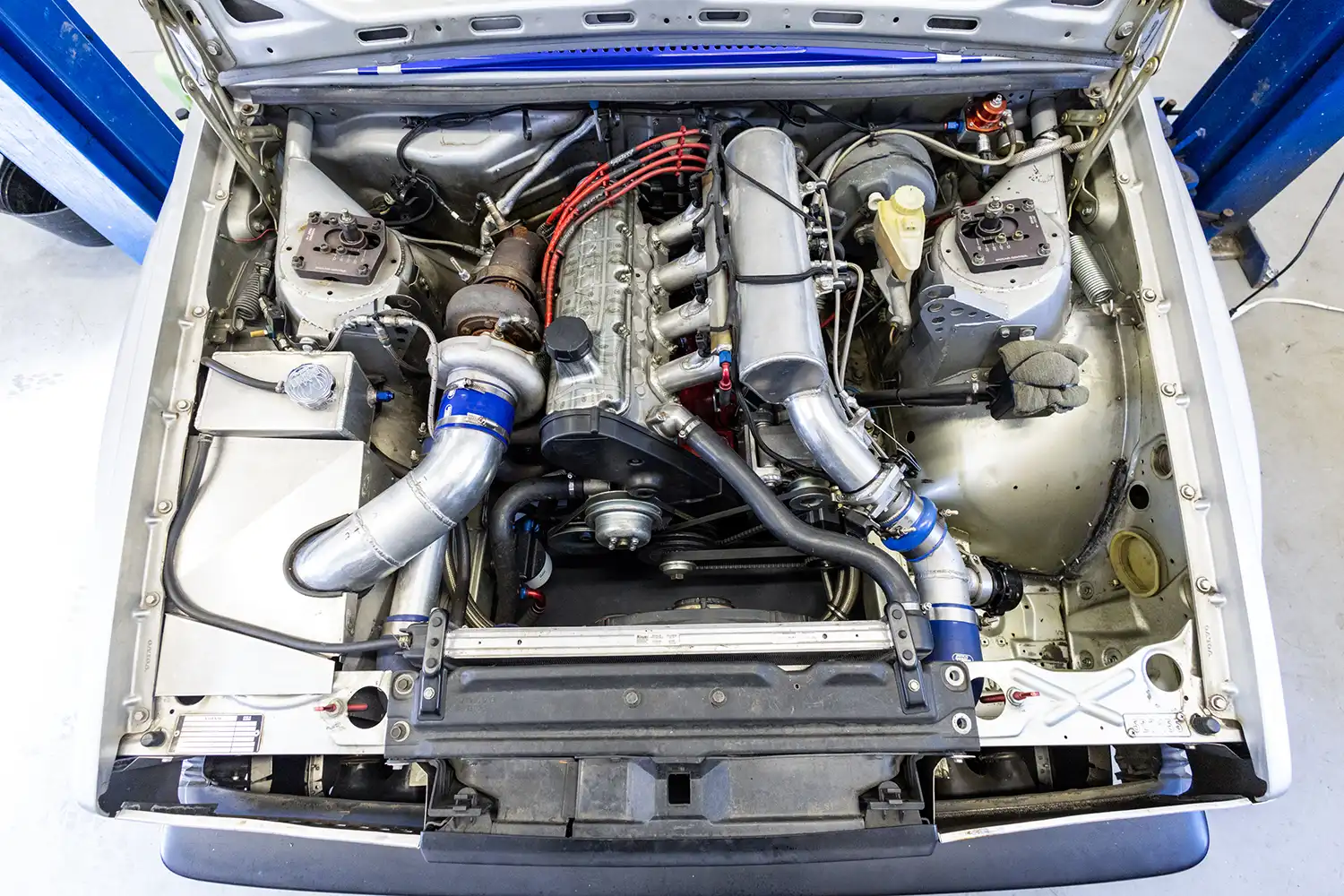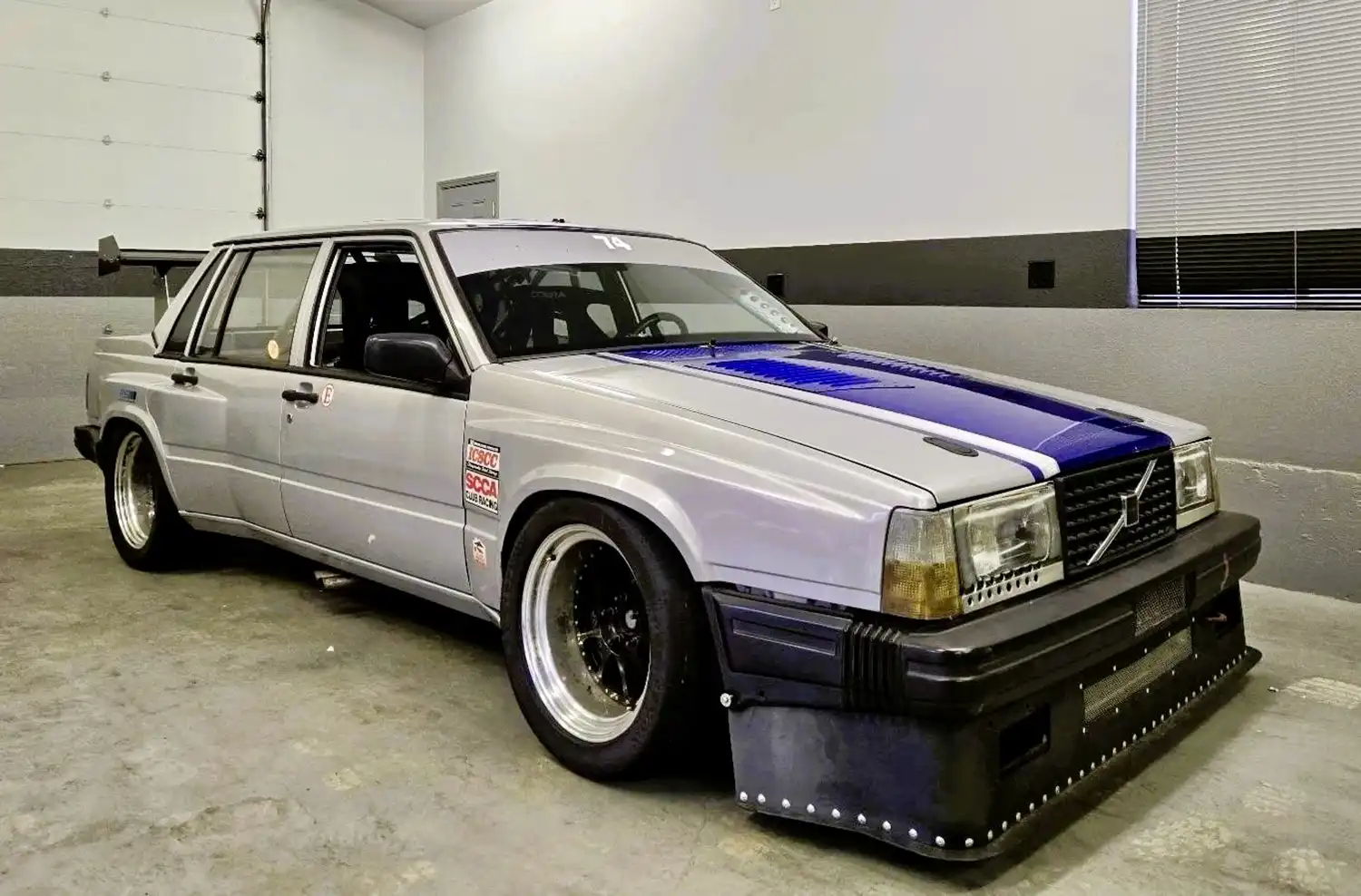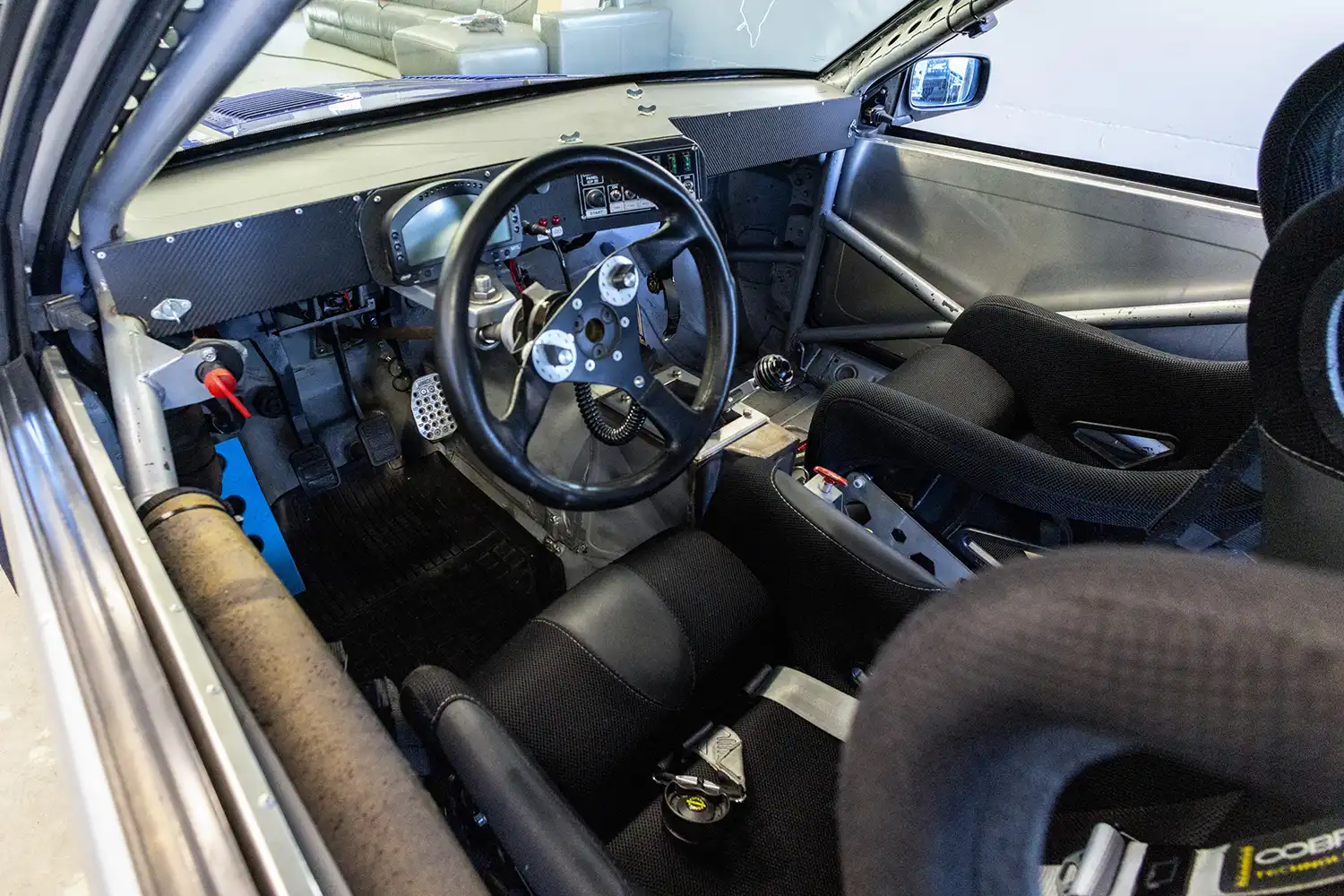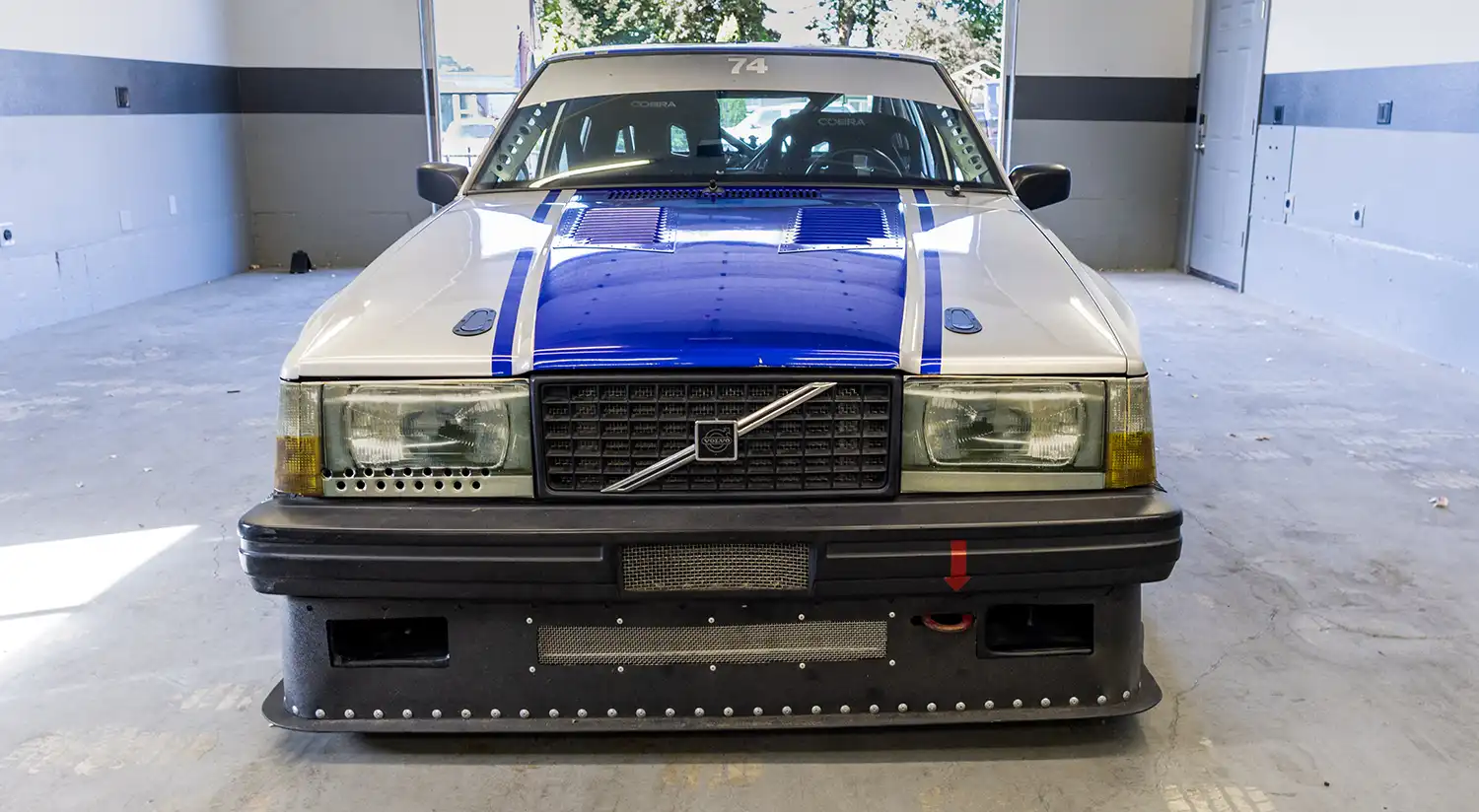
Full details & bid : bringatrailer.com
The Volvo 740, introduced in the mid-1980s, was known for its boxy yet practical design and its reputation for safety and reliability. While typically associated with comfortable family transportation, this particular 1985 Volvo 740 Turbo has undergone a radical transformation into a purpose-built race car. Campaigned in SCCA ITE and SPM classes, as well as various vintage racing events, this Volvo has been engineered for peak performance on the track. Its heart is a heavily modified turbocharged 2.5-liter inline-four engine that has demonstrated the capability of producing as much as 591 horsepower when running on race fuel. This potent engine is paired with a four-speed Rankin dog box transmission, known for its rapid and precise gear changes. The chassis has been extensively upgraded with components like a Kaplhenke Racing rear subframe and tubular front control arms, adjustable Öhlins and Bilstein coilovers, and Ground Control front camber plates. Braking is handled by powerful Wilwood calipers. The bodywork has been lightened and widened with steel box flares, a front air dam, a rear diffuser, hood vents, and a prominent carbon-fiber rear wing. Inside, the race-prepped cabin features a full roll cage, Cobra racing seats with harnesses, a digital AiM MXL dash, and a fire-suppression system. Further racing-oriented equipment includes a Peterson dry-sump lubrication system, AEM engine management, an ATL fuel cell, and lightweight three-piece 17-inch wheels. This no-reserve race car comes with an ICSCC logbook, service records, spare parts, a Carfax report, and a clean Oregon title.
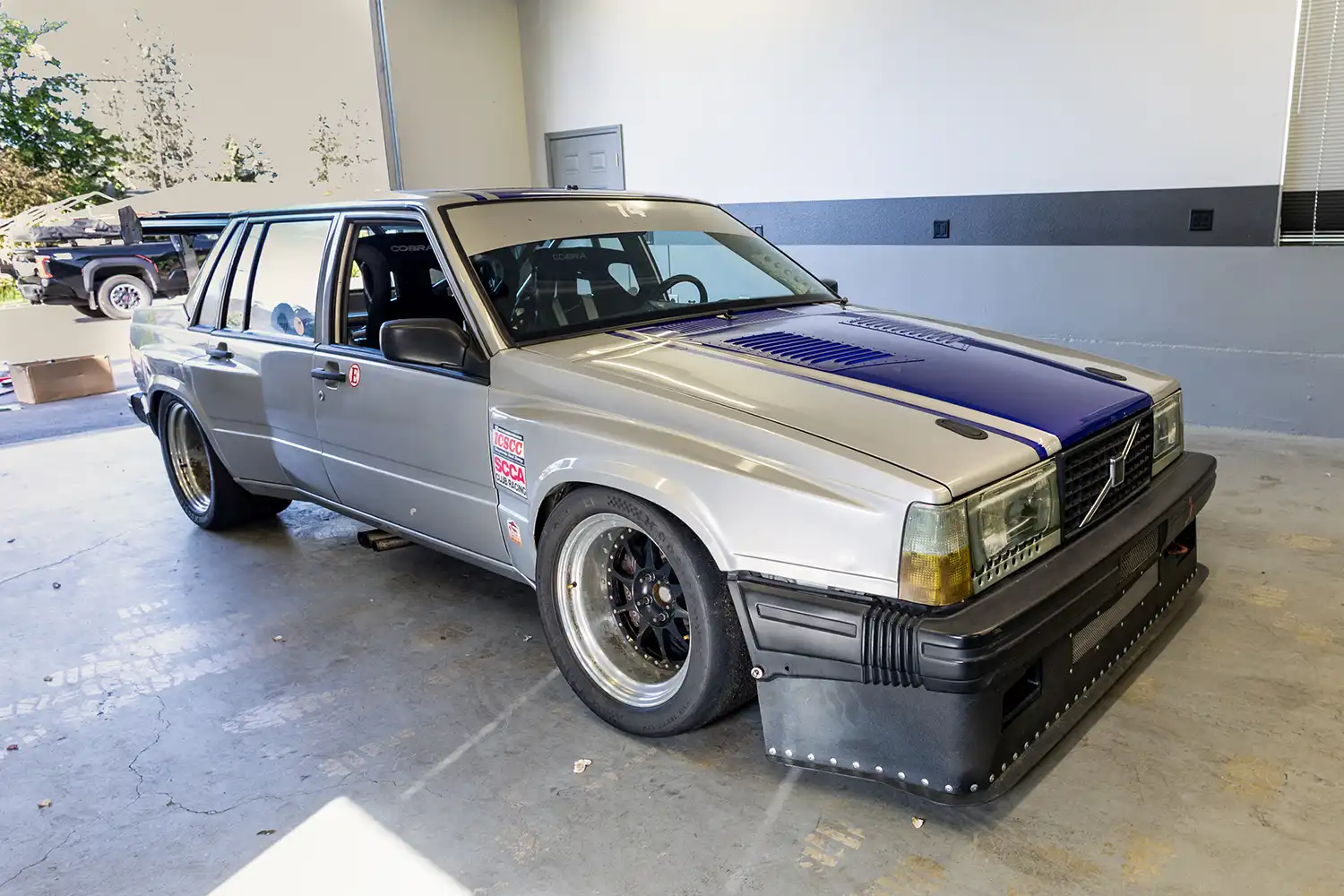
Aggressive Widebody and Lightweight Bodywork: The exterior of this 1985 Volvo 740 Turbo has been significantly modified for aerodynamic performance and a menacing track presence. Lightweight panels have been utilized throughout, and steel box flares have been expertly integrated to accommodate a wider track and larger tires. The sunroof has been replaced with a smooth filler panel for improved rigidity and aerodynamics. The car is finished in a silver paint scheme accented with blue stripes, and clever graphics on the nose panel mimic the appearance of headlights and turn signals, saving weight and potential damage. A functional front air dam incorporates inlets specifically designed to duct air to cool the brakes. Other aerodynamic enhancements include a rear diffuser to manage airflow at the rear, louvered hood vents to extract hot air from the engine bay, flush-mounted hood and trunk latches for improved airflow, side exhaust outlets to further reduce weight and optimize exhaust routing, and a substantial adjustable carbon-fiber rear wing mounted on aluminum stands to generate downforce.

High-Output Turbocharged 2.5-Liter Inline-Four: The original engine has been significantly upgraded for racing. The B230FT inline-four was bored and stroked to achieve a calculated displacement of 2.5 liters prior to its installation in 2022. It is equipped with a high-performance Precision 5858 turbocharger, a critical component for achieving its impressive power output. A Peterson dry-sump lubrication system ensures consistent oil pressure and prevents oil starvation under high G-forces experienced during racing. Engine management is handled by an AEM system, allowing for precise tuning and control of various engine parameters. Dynamometer test results, conducted in the car’s current configuration using ethanol-free 92-octane fuel, show peak output measurements of 393 horsepower and 357 lb-ft of torque. Notably, previous dynamometer results, achieved using 118-octane race fuel, demonstrate the engine’s potential to produce as much as 591 horsepower, highlighting its significant performance capabilities when running on high-octane fuel.
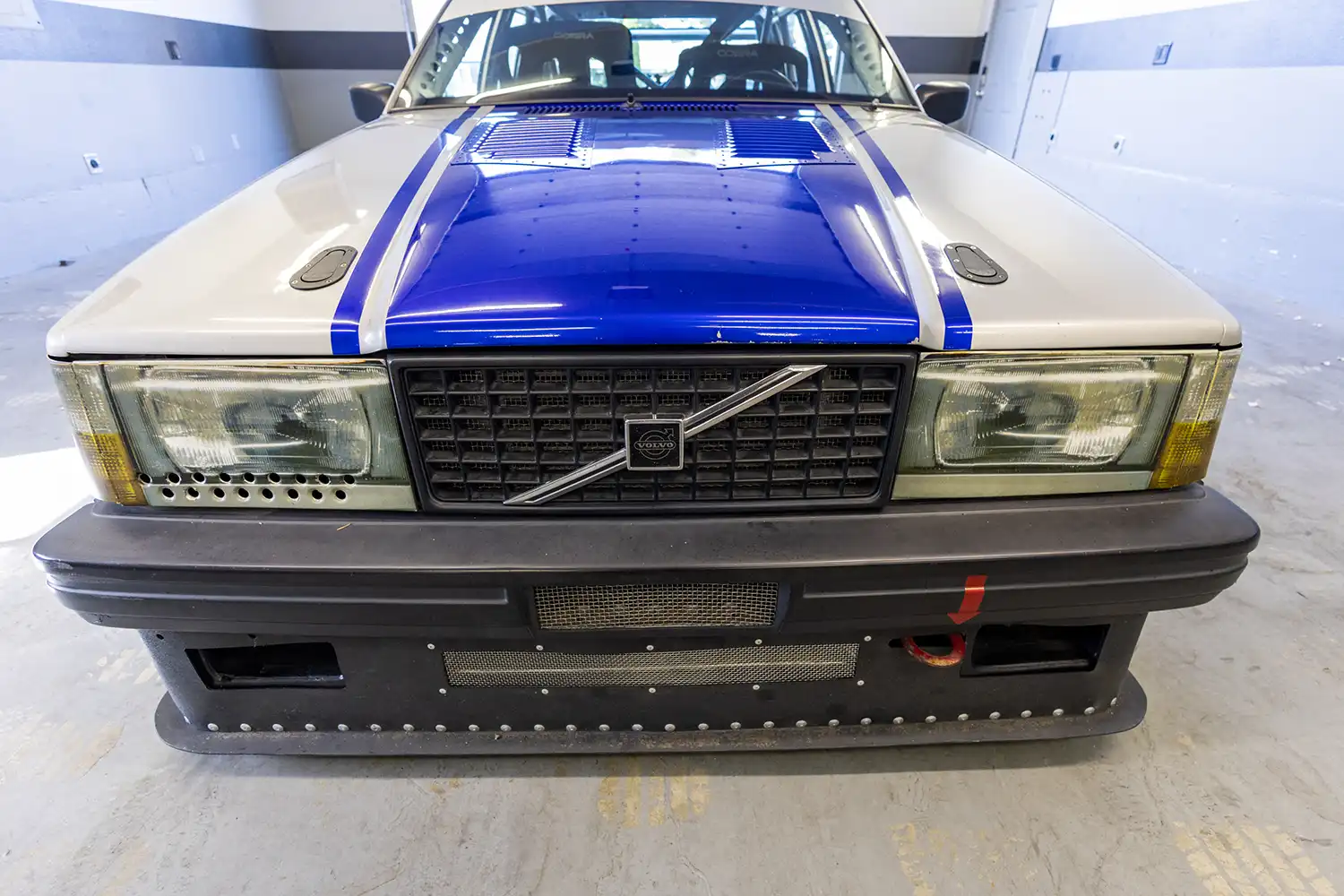
Four-Speed Rankin Dog Box Transmission: Power from the highly tuned engine is transmitted to the rear wheels through a four-speed Rankin CR dog box transmission. Dog box transmissions are favored in racing applications for their incredibly fast and direct gear changes, allowing for minimal interruption of power delivery during shifts. This type of transmission requires a different shifting technique compared to a traditional synchromesh gearbox, offering quicker engagement but potentially less smooth operation for street use. The power is then routed to a rear end with a 3.54:1 gear ratio, a setup likely chosen to optimize acceleration and top speed for the intended racing circuits.
Extensively Upgraded Suspension System: The chassis of this Volvo 740 has been heavily modified to provide optimal handling and control on the racetrack. The front suspension features Bilstein adjustable coilovers, allowing for precise adjustments to ride and damping. Ground Control front camber plates enable fine-tuning of the front wheel camber for improved cornering grip. Kaplhenke Racing tubular front control arms have been installed, likely offering reduced weight and improved strength and geometry compared to the factory components. The rear suspension has been completely revamped with a Kaplhenke Racing rear subframe and Öhlins coilovers, renowned for their high-performance damping characteristics and adjustability. This comprehensive suspension overhaul ensures exceptional handling and responsiveness on the track.
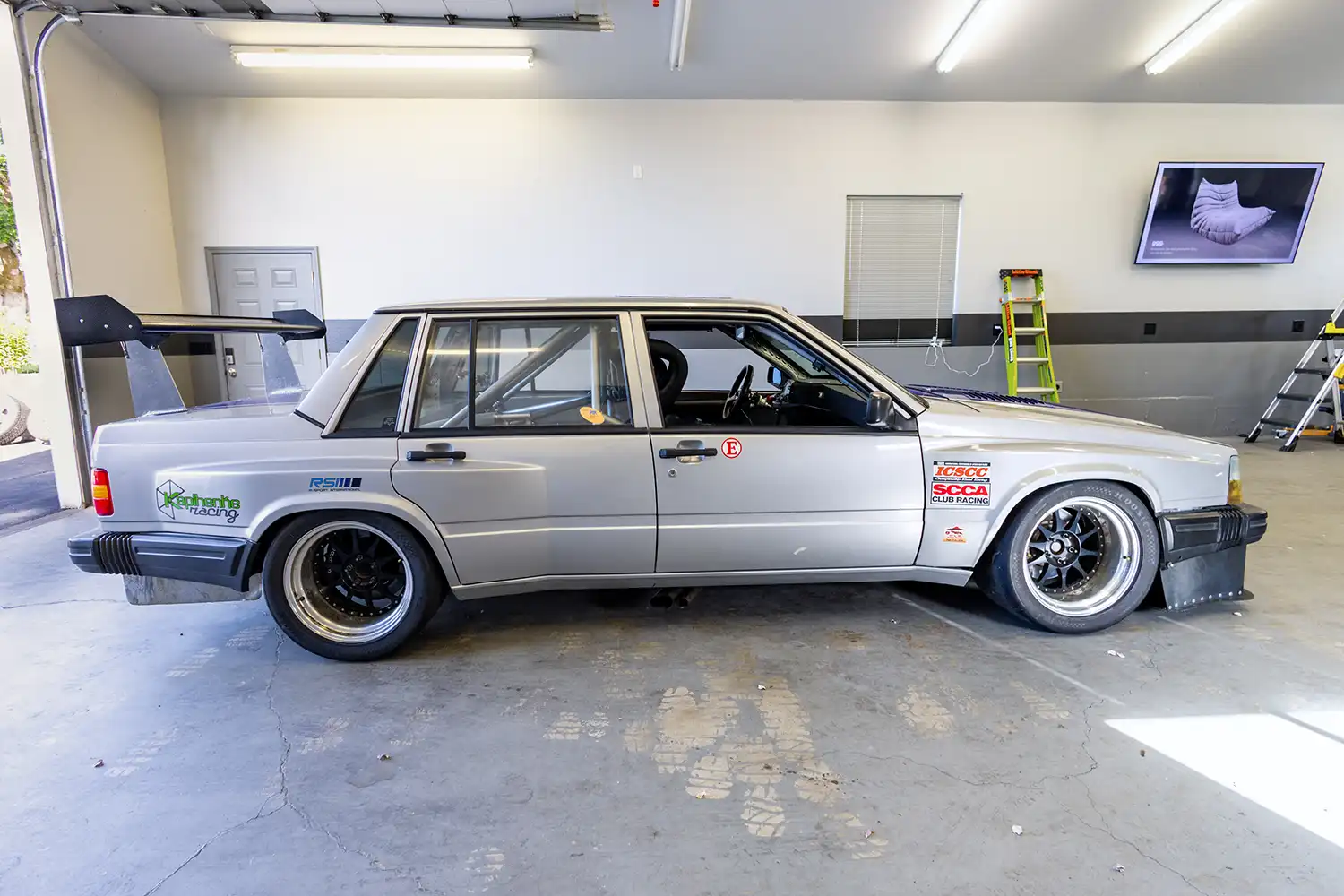
High-Performance Wilwood Braking System: To provide reliable and powerful stopping performance under racing conditions, this Volvo 740 is equipped with a Wilwood braking system. The front features six-piston Wilwood calipers, providing significant clamping force on the brake rotors. The rear is fitted with four-piston Wilwood calipers. This multi-piston caliper setup ensures consistent and powerful braking performance, crucial for controlling speed during intense track sessions.
Race-Prepped Interior with Safety Equipment: The interior of this Volvo has been stripped down and prepared for racing. A full roll cage with door bars provides crucial driver protection in the event of an accident. Both Cobra Evolution Pro-Fit racing seats are equipped with Schroth harnesses, securely holding the driver and passenger in place. The factory dashboard and door panels have been replaced with lightweight and durable bead-rolled aluminum sheet. A FireCharger fire-suppression system has been installed, a vital safety feature for any race car. Additional racing-oriented equipment includes a Jamex aluminum accelerator pad and a perforated dead pedal for improved driver control. The factory gauges have been replaced with a comprehensive AiM MXL digital dash, providing the driver with real-time data on crucial engine and vehicle parameters. The steering wheel is mounted to a quick-release hub for easy entry and exit and features integrated dials for adjusting boost and traction control (although the traction control is noted as inoperative). An ATL fuel cell, designed for safety and fuel delivery in racing environments, is mounted in the trunk. Notably, the car does not have a functional odometer, as is common in dedicated race cars.
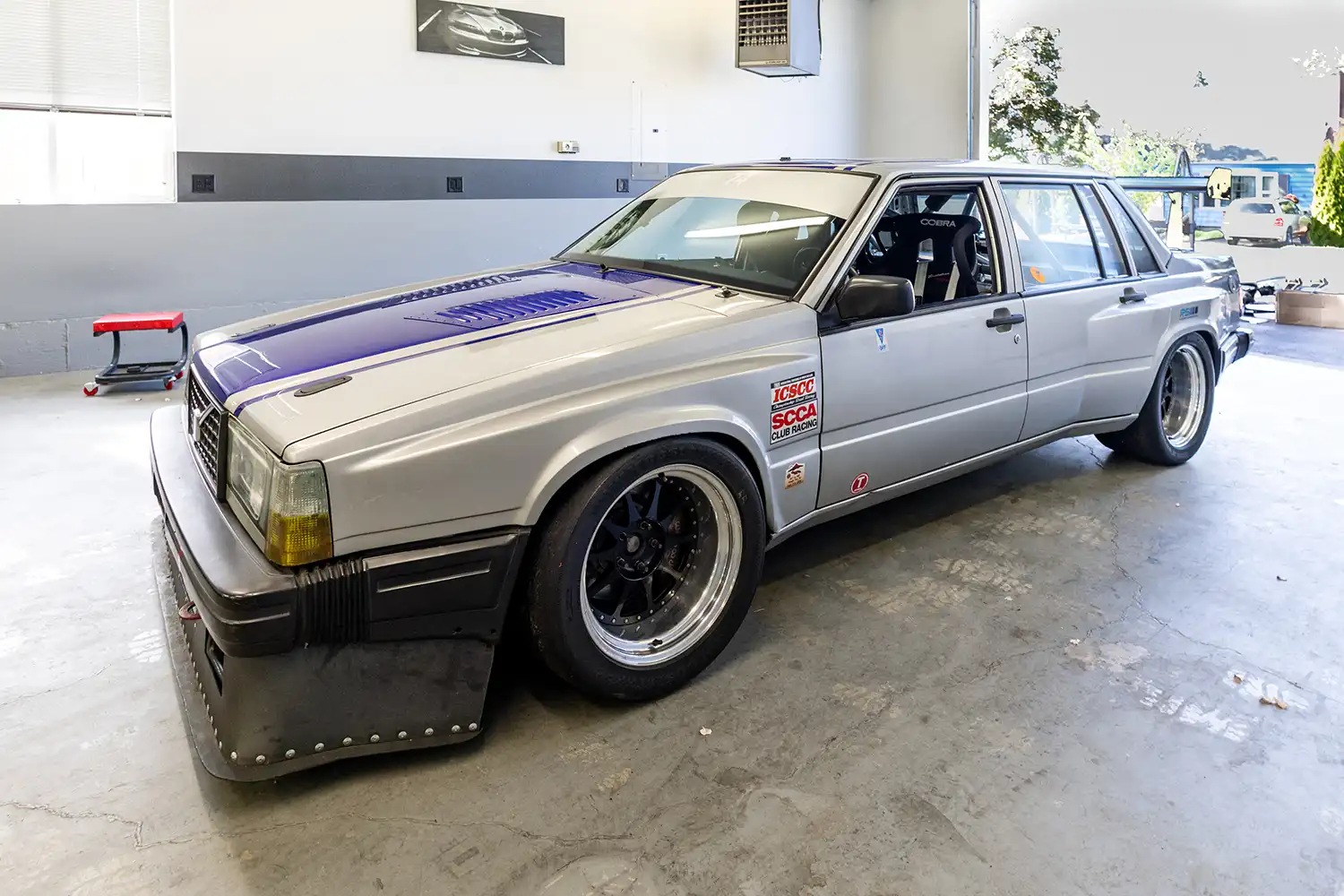
Summary:
- Built for SCCA ITE/SPM and vintage racing.
- Turbocharged 2.5-liter inline-four engine (up to 591 HP on race fuel).
- Four-speed Rankin dog box transmission.
- Kaplhenke Racing rear subframe and tubular front control arms.
- Öhlins and Bilstein adjustable coilovers with Ground Control camber plates.
- Wilwood six-piston front and four-piston rear brake calipers.
- Lightweight widebody with box flares, air dam, diffuser, and carbon wing.
- Full roll cage, Cobra racing seats with Schroth harnesses.
- AiM MXL digital dash and fire-suppression system.
- Peterson dry-sump lubrication and AEM engine management.
- ATL fuel cell and three-piece 17” wheels with Hoosier tires.
Disclaimer: This vehicle is a heavily modified race car. Performance figures are based on dynamometer results and seller claims. Potential buyers are advised to carefully review the ICSCC logbook, service records, and conduct their own thorough inspection to assess the suitability and condition of the vehicle for their intended use.
AI Assistance: Gemini
